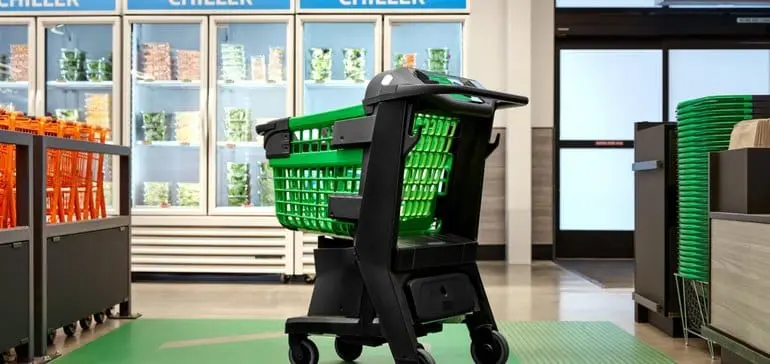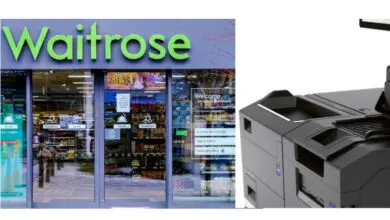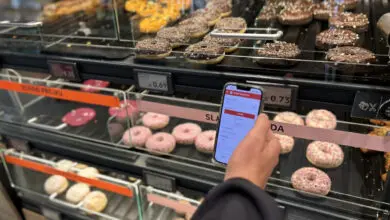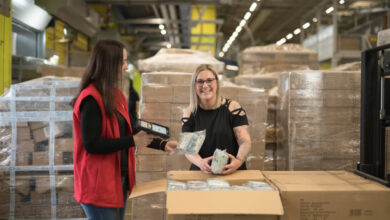Amazon again sets the pace for POS technologies
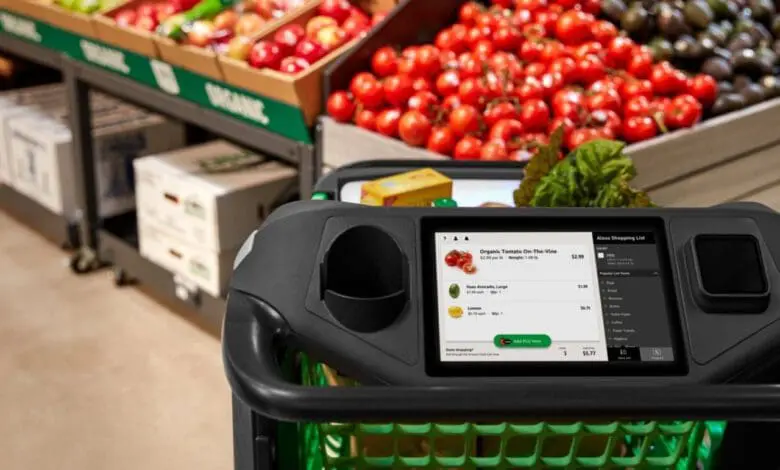
Nothing had put the world of in-store technology in such a state of awe as his barcode-scanned Amazon Go Stores. Possible limits of the technology were endlessly stressed. Now that 25 Amazon Go stores are using the technology, the critique focussed on the assumption that it was not suitable for larger stores.
That, too, should be over now: Amazon has unveiled the Dash Cart, a shopping trolley that automatically logs products placed inside and processes payment as shoppers leave the store. It is built for small and medium-sized shoppings.
The smart trolley will be used in public for the first time in Amazon’s soon-to-be-opened brand new supermarket format that is already attracting the attention of the complete global grocery retail industry.
Amazon is about to launch its new supermarket format
Amazon will open the first of its new supermarket stores close to Los Angeles in Woodland Hills at the 6245 Topanga Canyon Blvd.
There, Amazon has built the Amazon Go technology into the trollies: The Dash Cart is equipped with computer vision cameras as well as weight sensors that identify products as shoppers place them inside. After their shopping trip, users can check out at special lanes without any stop for the payment process. Payment is conducted online and receipts are sent via email.
Shoppers at the new Woodland Hills’ store won’t have to use the new Dash Cart. Different from the 25 Amazon Go stores, the new larger Amazon supermarket will be equipped with manned tills.
Again, it could be a shock for the word of instore technology providers such as Toshiba, NCR, Diebold Nixdorf and many others that Amazon – long time seen as irrelevant from their perspective as pure online player – is clearly leading the race on innovation
No need for shoppers nor cashiers to scan items
As with Amazon Go, shoppers can put any products they don’t want back on the shelf and the cart will note the change. The Dash Cart also integrates shopping lists and checks off each item as its placed inside, eliminating another task for consumers.
The system isn’t completely frictionless. Shoppers have to punch in PLU codes for any fresh produce they select and confirm the weight on the cart’s screen. It also isn’t available for more than two bags of items — for which customers will presumably use the store’s conventional checkout lanes.
But the Dash Cart is Amazon’s best attempt at approximating the Amazon Go experience inside a conventional grocery store. The company’s Go stores, which began opening in 2018 and recently launched a grocery offshoot called Go Grocery, are a technological wonder. However, the technology, which uses ceiling-mounted cameras and shelf weights to identify shoppers and every item they purchase, is only feasible inside small-scale stores right now. Amazon Go Grocery, which opened in February in Seattle’s Capitol Hill neighborhood and automatically recognizes packaged items as well as loose produce and baked goods, has 7,700 square feet of retail space.
Because the main components of Dash Cart are the smart carts and a special checkout lane, the system appears to be portable. That means Amazon could bring the smart carts to its roughly 500 Whole Foods stores, which have struggled to excite shoppers since the e-commerce giant took over in 2017. Amazon could also effectively license the technology to other retailers, as it’s reportedly doing with its Go systems.
